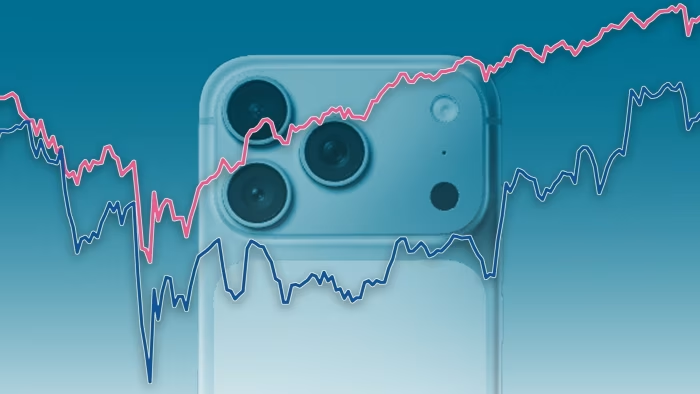Unlock the Editor’s Digest for free
Roula Khalaf, Editor of the FT, selects her favourite stories in this weekly newsletter.
Apple’s new iPhone 17 is kick-starting the company’s strongest growth in smartphone sales since the Covid-19 pandemic, as the biggest redesign of its flagship product in years proves a hit.
Early momentum for the redesigned versions of its mobile device has proven stronger than expected before its September launch, according to industry insiders who monitor Apple’s supply chain, mobile operators and the length of time customers must wait for deliveries.
Analysts forecast that smartphone revenues will return to 4 per cent growth in the latest fiscal year, hitting $209.3bn, according to Visible Alpha data. The growth rate will rise to almost 5 per cent in fiscal 2026, with iPhone revenues hitting $218.9bn.
That has led to market confidence building as Apple heads into the crucial holiday sales season, despite delays to releasing artificial intelligence features and Donald Trump’s tariffs weighing on the Silicon Valley giant’s share price over the past year.
“It’s fair to describe the iPhone 17 launch as surprising versus where Wall Street expectations were at the end of August” before launch, said Gene Munster at Deepwater Asset Management.
Apple’s smartphone revenues fell 2 per cent in its 2023 financial year, which ends in September, and were flat last year, after consumers splurged on consumer electronics during the pandemic.
But significant upgrades to the iPhone’s cameras, displays and batteries this year are tempting more customers to upgrade ageing devices.
Citing Apple’s own store data as well as carrier data, Bank of America analysts this week said shipping times shown for the iPhone 17 are longer than in previous years, which “could indicate strong demand”.
“When lead times are longer, it’s usually a better product cycle,” Munster said. Wait times on the new iPhone are about 13 per cent longer than last year, he added, possibly signalling a broader “upgrade cycle”.
On 30 October Apple will report its fiscal fourth quarter to the end of September, including the first few weeks of iPhone 17 sales.
“Clearly it’s a very strong quarter for Apple,” said the IDC’s Francisco Jeronimo. “I don’t remember the last time I saw queues outside the Apple store like I’ve seen this year.”
Checks of Apple’s supply chain suggested orders of the iPhone 17 were “much stronger” than last year’s iPhone 16, he added.
Tracked by unit volumes, iPhone sales remain broadly flat. Between Apple’s fiscal 2024 and 2026, units are expected to hover around 235mn, according to Visible Alpha data.

By 2027, analysts predict the company’s flagship product will start selling more than 240mn units, before rising to almost 260mn by the end of the decade, with market rumours pointing to the launch of a foldable iPhone next year.
Apple no longer discloses unit sales and prefers to focus investor attention on revenues, with much of its overall growth from its existing user base.
The latest iPhone line-up has been boosted by generous trade-in programmes. The base model has benefited from government subsidy policies for cheaper phones in China.
iPhones continue to account for more than half of Apple’s approximately $390bn in annual revenue. A hit could help Apple turn around a difficult 2025, marked by trade tensions that disrupted its global supply chains.
Apple’s shares hit a new yearly high in September around the iPhone 17 launch, but recently dipped with the broader market as Trump threatened 100 per cent tariffs on China.
Despite speculation of tariff-driven cost increases, Apple opted not to raise prices for the device.
Some analysts warn market expectations for the new iPhone have got ahead of themselves. Earlier this month Jefferies downgraded Apple shares to “underperform” citing “excessive expectations” for iPhone demand.
